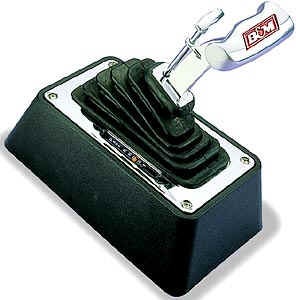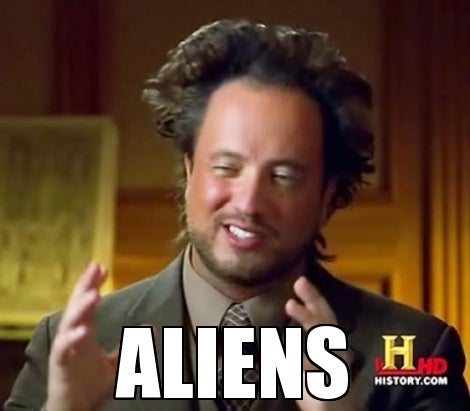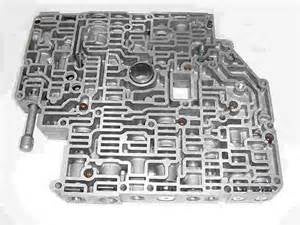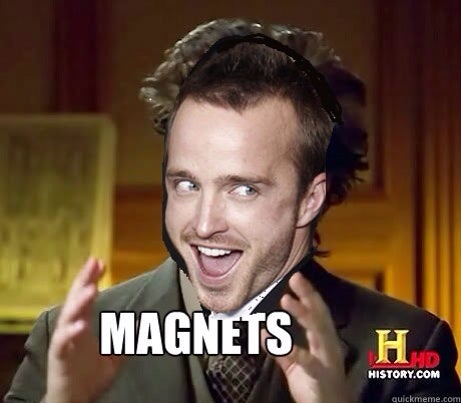 "TurboSloth" (TheTurboSloth)
"TurboSloth" (TheTurboSloth)
12/31/2013 at 11:27 • Filed to: None
 2
2
 15
15
 "TurboSloth" (TheTurboSloth)
"TurboSloth" (TheTurboSloth)
12/31/2013 at 11:27 • Filed to: None |  2 2
|  15 15 |

I got curious after watching a YouTube video, and found out that it was put into an automatic car. My knowledge of transmissions are pretty low, so I was hoping you guys knew how this worked. I thought automatic transmissions worked with torque converters rather than gears, so how is it that you're able to shift if your transmission isn't a manual or CVT?
Also, when I see it being used on Youtube, people are shifting down. When I shift down on an auto (from D to 2 to 1), the RPMs increase but the ECU always kicks me into a higher gear because RPMs are too high.
Also, my dad's car has a 5r55s ford transmission. According to wikipedia, it is an automatic 5 speed. My dad's car also has an overdrive button. Is the overdrive gear the 5th gear? or is it 5 speed + overdrive (making it 6 speed?)
 William Byrd
> TurboSloth
William Byrd
> TurboSloth
12/31/2013 at 11:31 |
|

 Iheartmy365kHonda - Car enthusiasts do like FWD
> TurboSloth
Iheartmy365kHonda - Car enthusiasts do like FWD
> TurboSloth
12/31/2013 at 11:31 |
|
Magic.
 KB Garage
> Iheartmy365kHonda - Car enthusiasts do like FWD
KB Garage
> Iheartmy365kHonda - Car enthusiasts do like FWD
12/31/2013 at 11:34 |
|
Witchcraft.
 Sethersm
> TurboSloth
Sethersm
> TurboSloth
12/31/2013 at 11:36 |
|
" When I shift down on an auto (from D to 2 to 1), the RPMs increase but the ECU always kicks me into a higher gear because RPMs are too high."
Are you shifting down to 2 or 1 when you're going 70mph? The ECU may be trying to prevent over-reving the engine. If you were to try it at a moderate speed (say 35mph) it might do as you desire and drop to 2nd and hold there (some cars will use only 2 when in 2, others will use 1 and 2).
 William Byrd
> TurboSloth
William Byrd
> TurboSloth
12/31/2013 at 11:37 |
|
So far we have Aliens, Witchcraft, and Magic.
Man we're not very helpful today. New Years resolution, more helpful next year!
 Just wear your damn mask...
> TurboSloth
Just wear your damn mask...
> TurboSloth
12/31/2013 at 11:44 |
|
So many questions in one post. Let me see if I can...
1. Regular automatic transmissions (not CVT) do utilize a torque converter rather than a clutch, but they also contain one or more planetary gear sets which are activated or deactivated via clutch packs controlled by hydraulic pressure metered by either a traditional valve body or electronic controls. Modern automatic transmissions will also feature a lock-up torque converter that may or may not be counted as a "gear", but that is a whole 'nother conversation.
2. Most cars with traditional automatic transmissions can be shifted manually. It isn't the same as shifting a manual transmission, but it can be done. Certain cars accept this more than others (while playing with the flappy paddles in a recent rental Camry I was able to bounce the engine off its rev limiter).
3. The shifter pictured looks like a B&M Quik Shifter, which is referred to as a ratchet shifter, which means it has a mechanism that only allows you to shift as fast and as hard as you want while only selecting the next gear up or down. Sort of like a sequential gearbox shifter, but for an automatic.
3a. I'm going to make an assumption without looking at your video and say that the vehicle in the video probably had a "reverse valve body", which means that the mechanism in the transmission is modified so that instead of P-R-N-D-2-1 the shift pattern is P-R-N-1-2-D. There are a couple reasons to do this. 1) like a proper sequential gearbox in a race car, it is easier to pull back to upshift under acceleration than to push forward. 2) Since these shifters are mainly used for drag racing, when downshifting isn't part of the equation, it is safer to upshift away from Neutral, or even worse, Reverse.
Hope that helps.
 jlmounce
> TurboSloth
jlmounce
> TurboSloth
12/31/2013 at 11:44 |
|
The torque converter in an automatic transmission acts sort of like how a manual clutch works. Instead however it uses fluid to transfer (or not) the power to the transmission's gear set. All automatic transmissions do have gears, unlike the CV transmissions you reference which use cones and belts.
This is obviously a simplistic answer and there's a LOT more going on inside an automatic transmission.
For vehicles with auto's that are pre-electronic control, there's a lot of shifting that can and does take place if you're in a performance environment. As an example, my 1969 Firebird has a TH400 (Turbo Hydromatic) transmission. It's gear pattern is PND21. So if I want to manually shift the car from a stop, I need to pull the gear lever furthest towards me. As rpm increase and I want to shift, I push the lever 1 notch up and then another to reach it's 3rd and final gear.
Or I can leave it in D and the transmission does all the work for me.
What you are seeing in those YouTube videos is a reverse valve body. This changes the direction of the shift so that the pattern is now PN12D. If they want to start in 1 and shift themselves, they start in the gear position furthest from them, and pull down. This valve body arrangement is common for drag racing because it's a bit more accurate and you're not fighting G-Force as much during hard acceleration.
The final bit here is that it's possible to have what is known as a manual valve body. Either reverse or standard. In a manual valve body equipped auto, the transmission will not shift for itself. You must do the work on your own. So even though there's no clutch to operate, you still have to manually select the gear/s you want.
That's an extremely short and simplistic answer. If you want to know more, I'd check out this link.
How Automatic Transmissions Work
 Zipppy, Mazdurp builder, Probeski owner and former ricerboy
> TurboSloth
Zipppy, Mazdurp builder, Probeski owner and former ricerboy
> TurboSloth
12/31/2013 at 11:49 |
|
Automatic transmissions shift based on speed, and the force that changes gears is the fluid pressure, what you're "shifting" is a governor that forces the fluid to go a certain way to hold a gear. Gear ratios are done by holding certain parts of the planetary gearset. It's a very complicated system, and if you take one apart, you'll see it better.
Overdrive is whenever the gear ratio is less than 1.
 wabbastang
> TurboSloth
wabbastang
> TurboSloth
12/31/2013 at 11:49 |
|
OK kids I'll do it, in a basic sorta way.
What you are likely watching on youtube is the operation of what's called a ratchet shifter. The purpose is to allow fast/reliable control of gear changes in one direction while drag racing, where automatics are used for (among other things) the obvious reason of fast shifting, but a manual-controlled shifter is used (as opposed to just putting it in D) so the driver has control of when the shifting happens. A ratchet shifter allows you to slam the shifter into the next gear but will not let it progress to the next gear until pressure on the handle is momentarily lifted - The ratchet part. That way you just hit the shifter, you're into the next gear without sliding too far.
The reason you see them operating "backwards" on youtube is because those cars are likely running a reverse [manual] valve body (the part in the tranny that controls everything) which reverses the order and also removes automatic shifting (no more "D"). Instead of the pattern being P-R-N-D-2-1, it's P-R-N-1-2-3. That way you go in and out of first from neutral, up through the gears, and back down into neutral. Just a more logical pattern as you don't have to go through the gears to get back to N.
In the case of your 5r55s, it's actually P-R-N-D-3-2-1, where D=4th and 5th. 5th is overdrive which you can turn off with a button.
 RamblinRover Luxury-Yacht
> TurboSloth
RamblinRover Luxury-Yacht
> TurboSloth
12/31/2013 at 11:52 |
|
Some shifters are just for looks, but there is such a thing as an altered valve body to change shifting behavior, and to allow more direct manual control of shifts.
Torque converters rather than gears
Not exactly. Imagine every gear in your auto trans as being functionally similar to a gear in a standard transmission, but locked in place or left to spin by a clutch. That's an oversimplification for some modern setups that use multiple stages for a given gear, but it's close enough. Which clutches are locked and when is controlled by the valve body: hydraulic actuation of the clutches based on engine speed and other factors. On a simple old-school auto, engine speed is more or less indicated to the trans just by a vacuum connection. A valve body is almost like a hydraulic/mechanical computer, and changing it changes how you shift. Here's one to horrify you:

What is the torque converter doing in all this? Well, it's somewhere between a clutch and a CVT. It provides the necessary slip to get started and change speeds like a clutch, but in a given gear it varies its blend of torque/speed based on the resistance of the shaft it's driving. The "CVT-like" function loses you a lot of power, but back in the day was a big selling point of autos.
So what does the custom valve body do? Mostly things like eliminate over-rev protection when a low gear is locked in, shift at a different set of revs (much higher), that sort of thing. Also may feature reverse lockout not present in the original car, as some race specs require it.
 Party-vi
> TurboSloth
Party-vi
> TurboSloth
12/31/2013 at 11:54 |
|
I have a B&M Megashifter in my Willys. Fun stuff.
 JEM
> KB Garage
JEM
> KB Garage
12/31/2013 at 12:57 |
|
Magnets.
 KB Garage
> JEM
KB Garage
> JEM
12/31/2013 at 13:21 |
|

 Manuél Ferrari
> RamblinRover Luxury-Yacht
Manuél Ferrari
> RamblinRover Luxury-Yacht
12/31/2013 at 14:18 |
|
Looking at that part is giving me a headache
 William Byrd
> Just wear your damn mask...
William Byrd
> Just wear your damn mask...
12/31/2013 at 15:01 |
|
See, we're not all useless! Nice work.